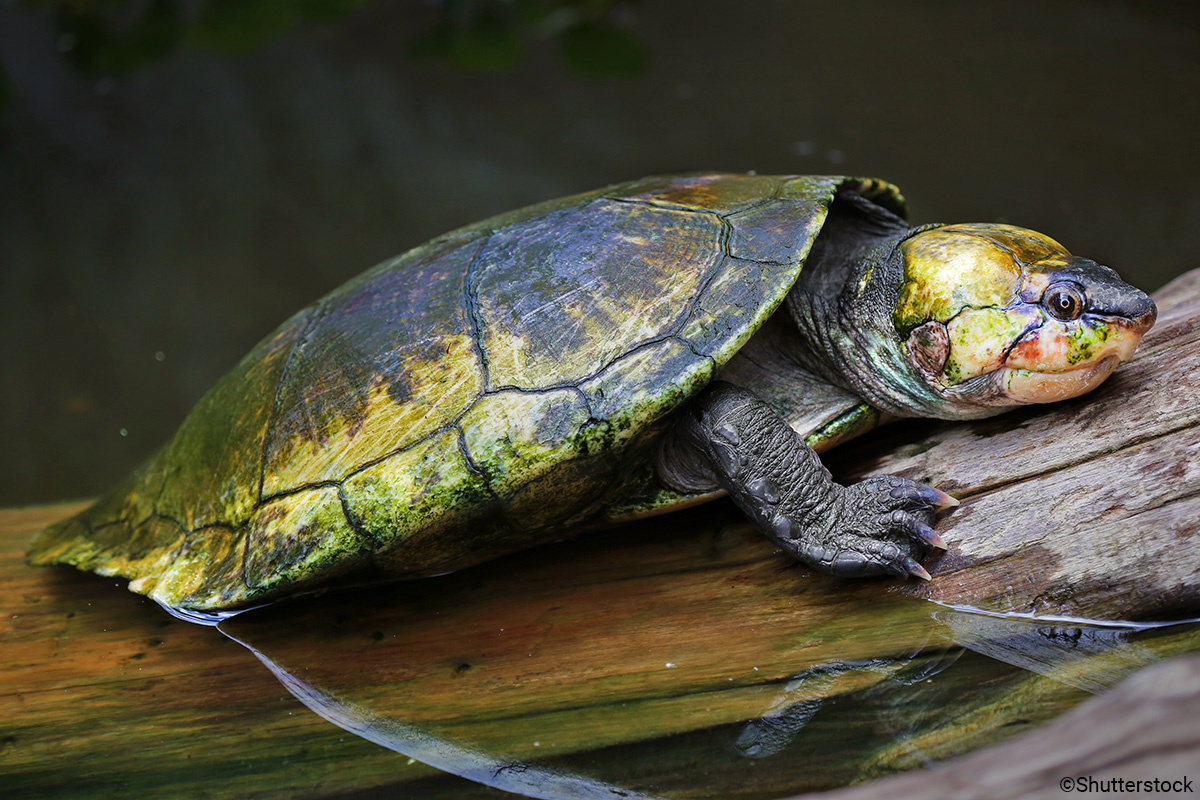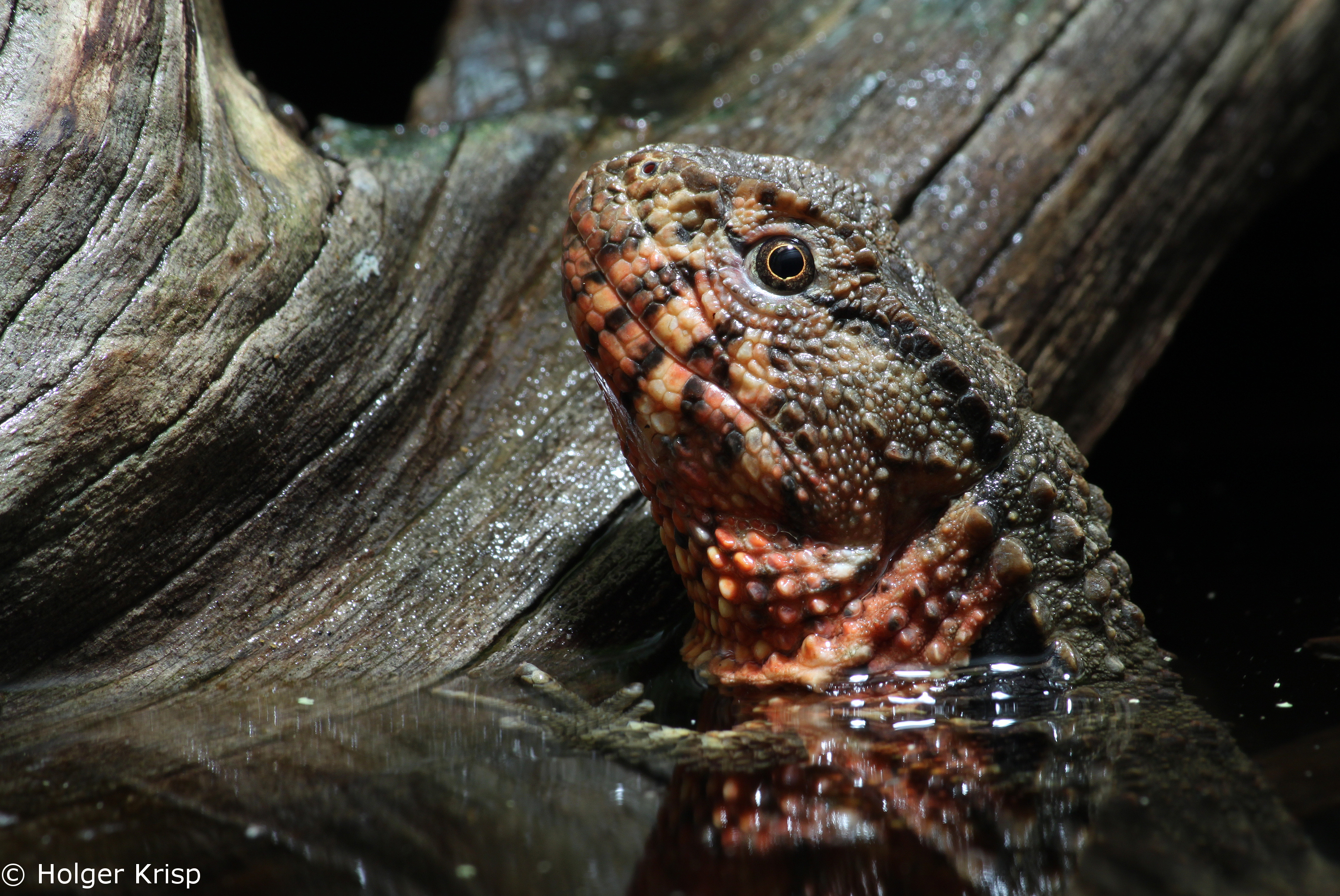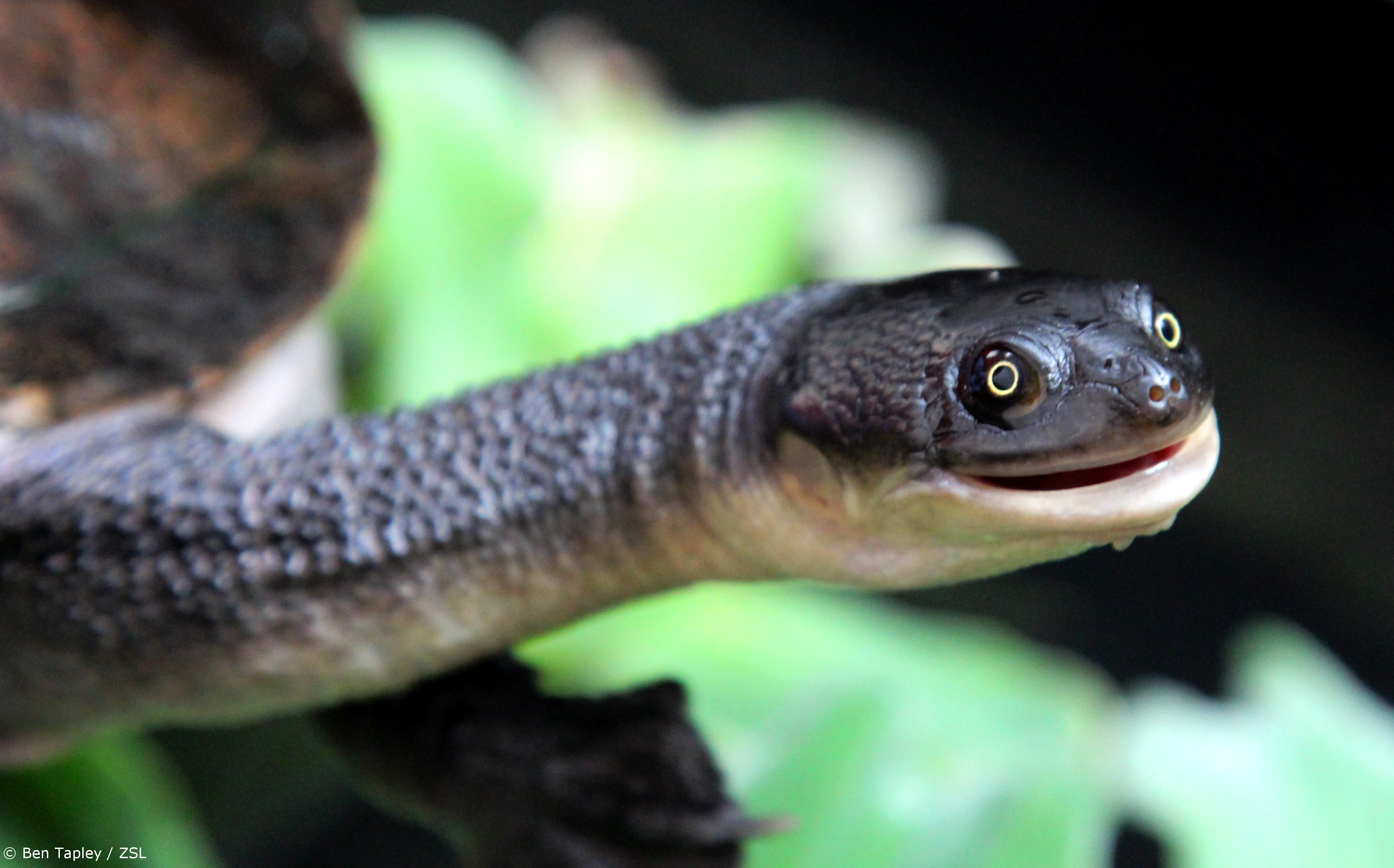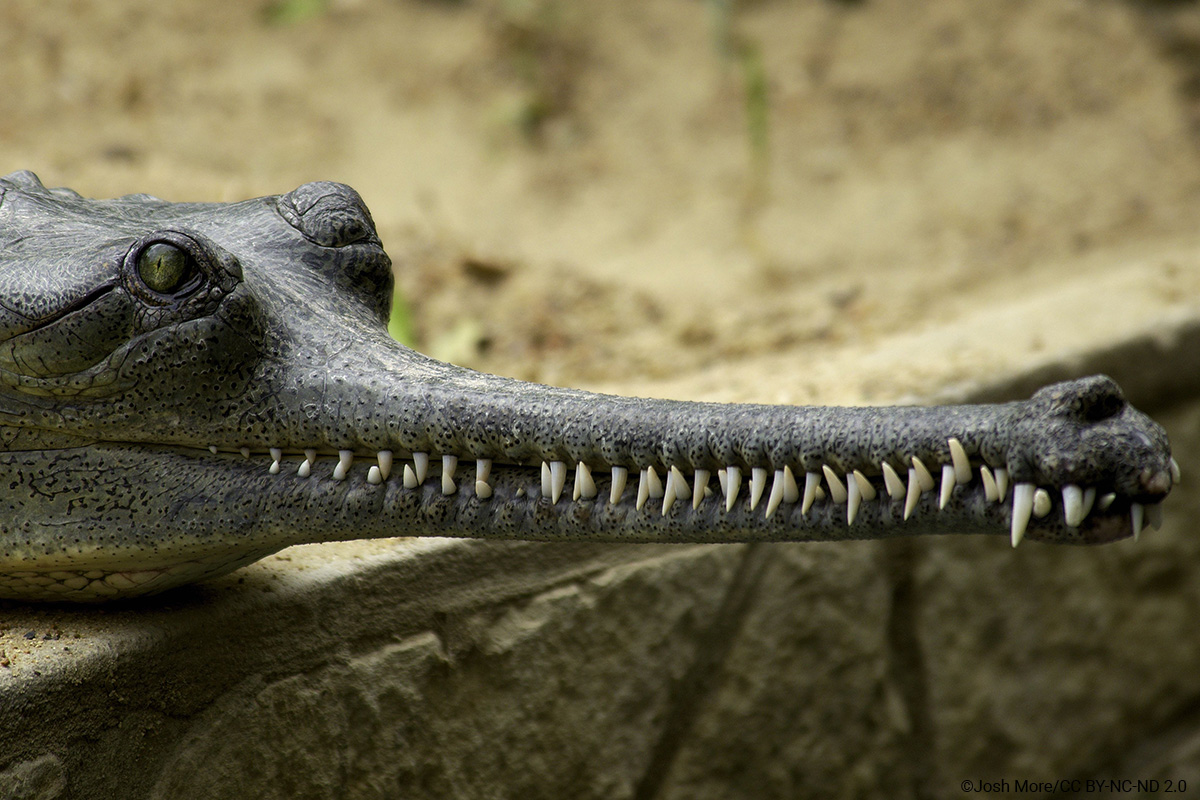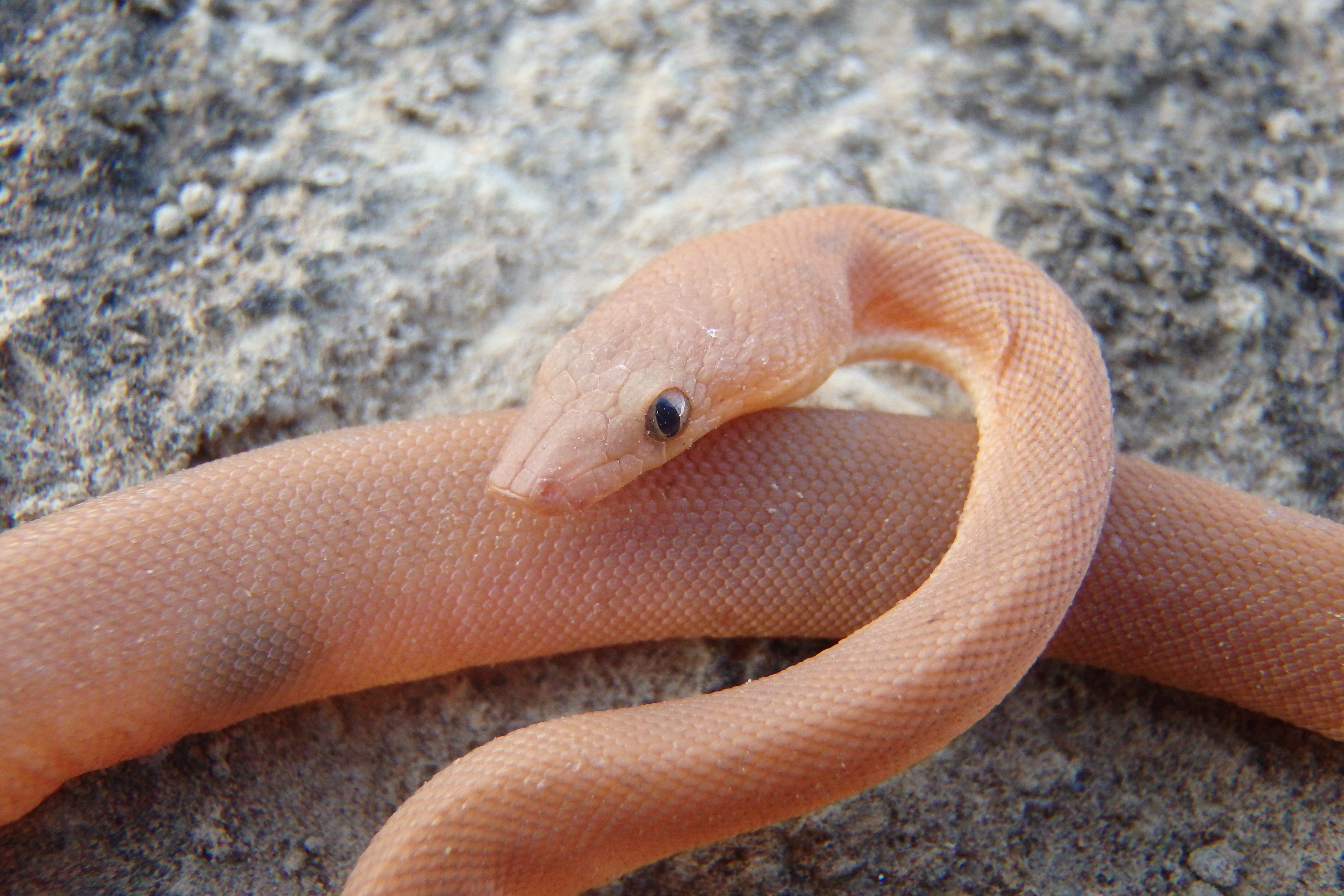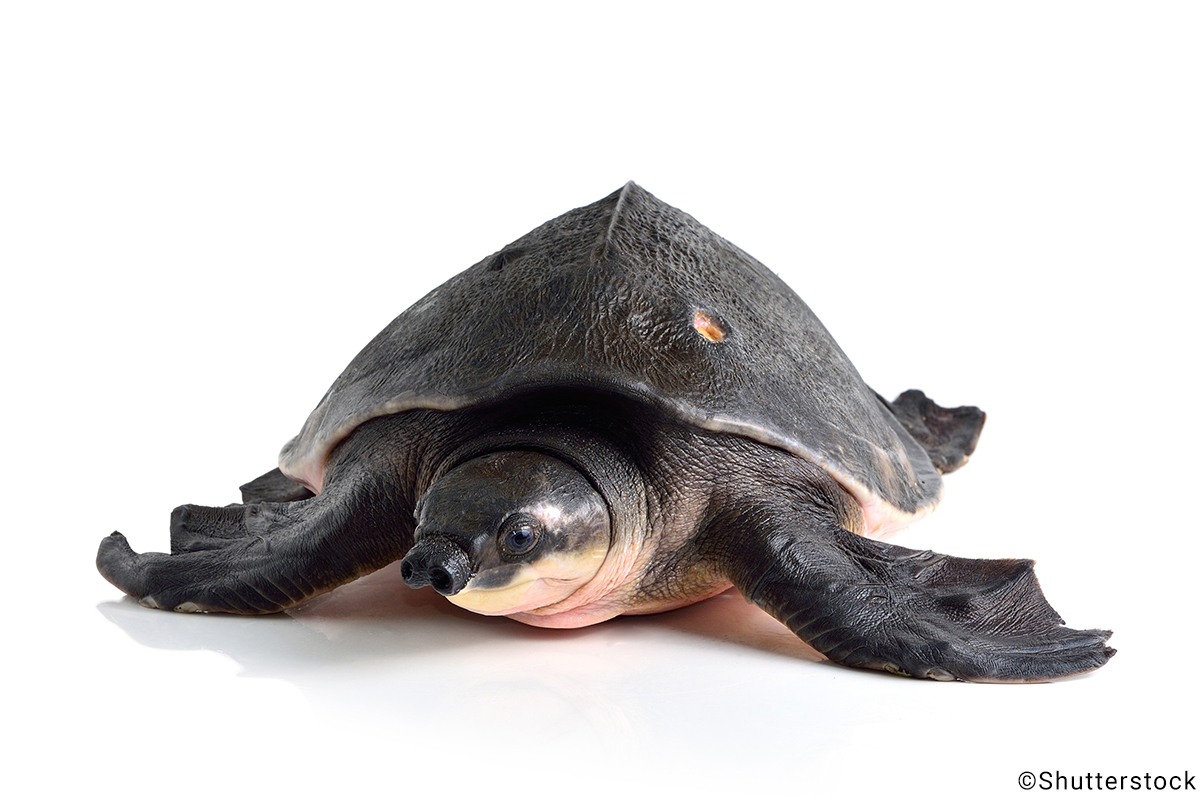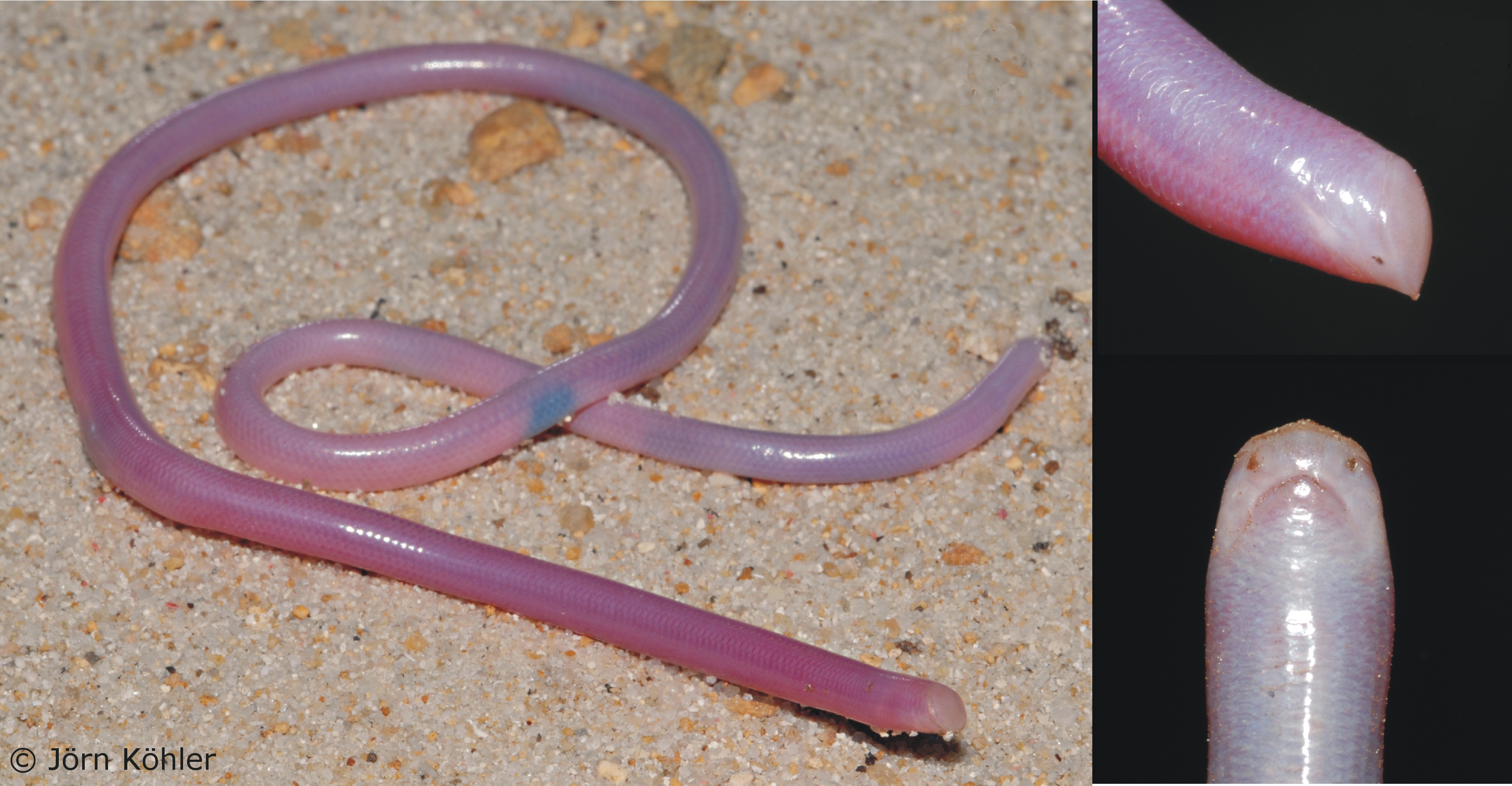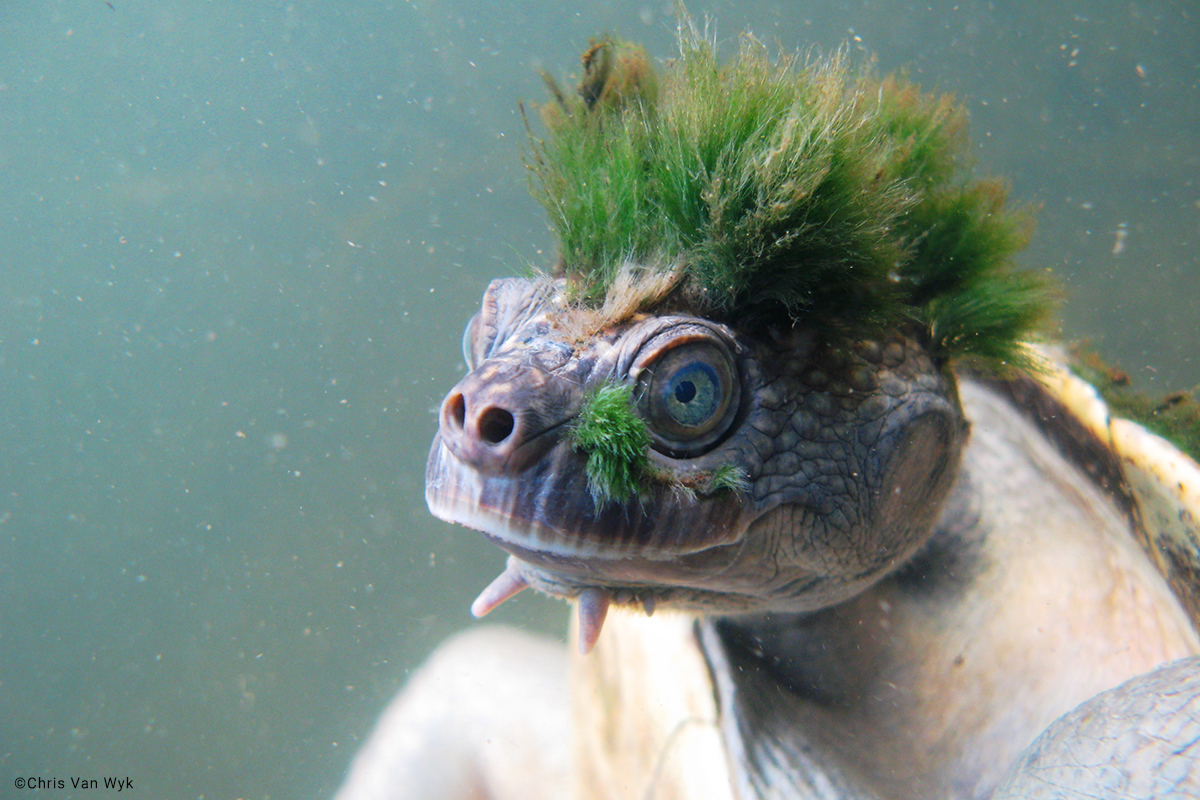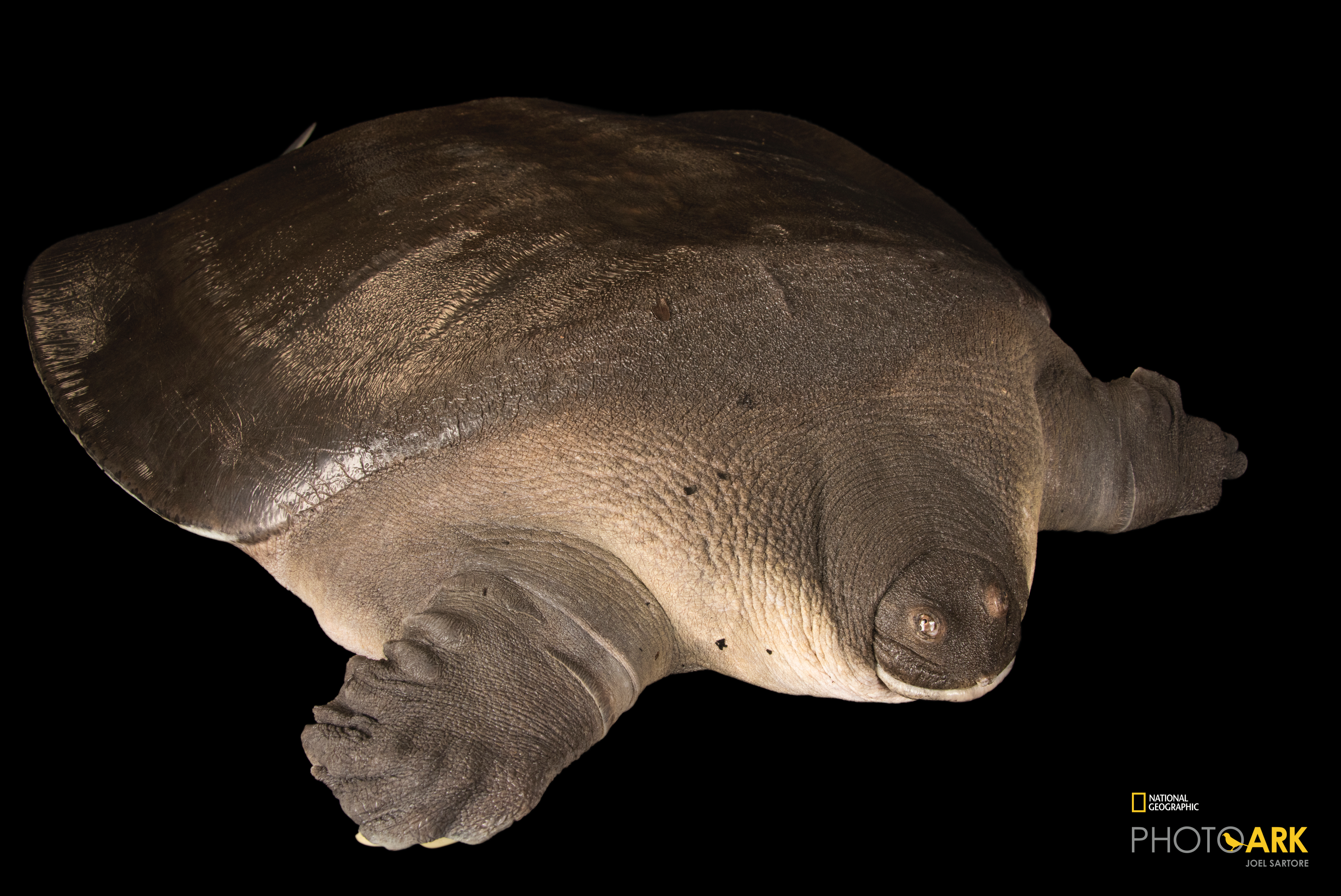EDGE Reptiles are weird. From turtles that breathe through their genitals to chameleons the size of your thumbnail, their diversity is astonishing. Here, the EDGE of Existence Programme’s Resident Herpetologist picks his top 10 most wonderful EDGE Reptiles!
By Rikki Gumbs
10. Desperate leaf chameleon – Brookesia desperata
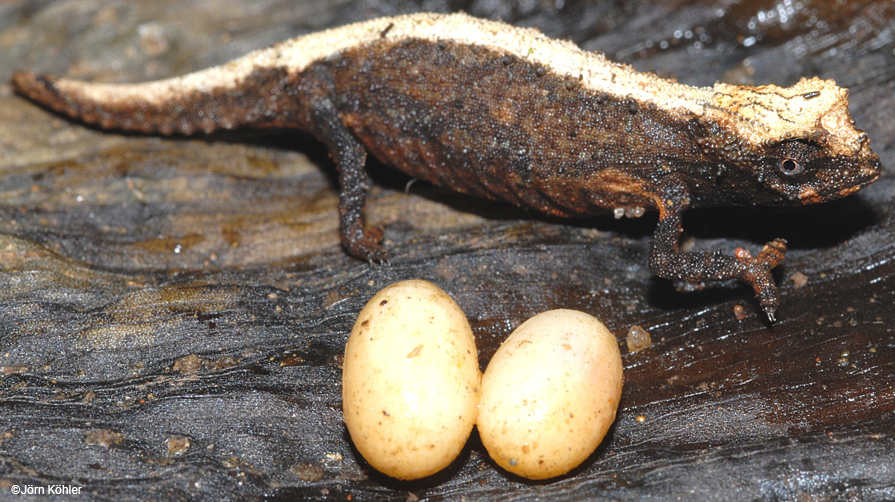
ED Score: 19.4
Red List: Critically Endangered
EDGE Rank: 37
First up at number 10…
This minuscule chameleon is one of the world’s smallest reptiles, measuring no more than 3 cm (minus the tail). As shown in the image above, despite its diminutive stature, this little lizard lays huge eggs relative to its body size. I mean, how did those two eggs ever fit inside that tiny lizard? Like many chameleons, the desperate leaf chameleon can change colour to reflect its mood. Here, the blonde mohawk sported by this female is actually a stress colouration. Strangely, this is not the only reptilian mohawk to feature on the list.
This species is so named due to the desperate situation facing its remaining forest habitat in its native Madagascar.
Click here to learn more about this species.
9. Madagascar big-headed turtle – Erymnochelys madagascariensis
ED score: 96.8
Red List: Critically Endangered
EDGE Rank: 1
The number one ranked EDGE Reptile simply oozes prehistoric.
This highly distinctive turtle has large, golden plates of armour protecting its oversized head, much like something from Jurassic Park. In fact, this ancient turtle diverged from all other living organisms more than 80 million years ago — long before the extinction of the dinosaurs!
Not only is this turtle prehistoric, it is also threatened. Habitat loss and harvesting for its meat mean this is one of the 20 most endangered turtles on the planet.
Click here to learn more about this species.
8. Chinese crocodile lizard – Shinisaurus crocodilurus
ED Score: 103.4
Red List: Endangered
EDGE Rank: 5
Honey, I shrunk the dinosaur!
With its prominent ridges of knobbly scales and long, powerful tail, the Chinese crocodile lizard is basically a scale model Godzilla. The only living representative of an entire family, this lizard last shared a common ancestor with any living species more than 100 million years ago. To put that in perspective, we last shared a common ancestor with our closest living relatives, the chimpanzee and bonobo, less than 10 million years ago!
This miniaturised dinosaur is under severe threat from hunting for the international pet trade and habitat loss across its remaining range, which is now highly fragmented.
Click here to learn more about this species.
7. Roti Island snake-necked turtle – Chelodina mccordi
ED Score: 45.3
Red List: Critically Endangered
EDGE Rank: 6
Just look at that smile! It’s so…sinister.
As its name suggests, the Roti Island snake-necked turtle has an extraordinarily long neck. In fact, it is almost as long as the rest of its body! Also as its name suggests, it is found on the Island of Rote (or Roti), in Indonesia. This marvelous little turtle is one of several comprising the genus Chelodina that, together, diverged from all other turtles over 70 million years ago!
Unfortunately, this striking turtle is threatened by collection for its meat and is one of the 15 most endangered turtles worldwide.
Click here to learn more about this species.
6. Gharial – Gavialis gangeticus
ED Score: 41.1
Red List: Critically Endangered
EDGE Rank: 16
This is the most unique of all the crocodiles (and alligators).
The gharial has an incredibly long and slender snout, which is perfect for capturing fish. This large crocodile is the only species with obvious differences between the sexes: adult males are easily identified by a large, bulbous growth (called a ‘ghara’) on the tip of their snout. This majestic crocodile split from its closest living relative, the ‘false’ gharial, around 20 million years ago.
Worryingly, there may be fewer than 250 adults remaining in the wild. Fishing practices and habitat loss threaten the ‘real’ gharial across its remaining distribution in India and Nepal.
Click here to learn more about this species.
5. Round Island keel-scaled boa – Casarea dussumieri
ED Score: 70.9
Red List: Endangered
EDGE Rank: 22
The first snake in the top ten is a special one.
The Round Island keel-scaled boa can change colour over a 24-hour period, and is also the only vertebrate with a joint in its upper jaw, used to capture and eat its lizard prey.This species is found on only one small island off the coast of Mauritius. The sole surviving member of its family, this beautiful snake split from all other living species around 65 million years ago. Its closest relative on the Tree of Life — the Round Island ground boa (they weren’t very imaginative when naming the snakes of Round Island!) — was declared extinct less than 30 years ago, and the keel-scaled boa almost suffered the same fate.
The introduction of invasive mammals led to the loss of this peculiar snake from all Mauritian Islets on which it occurred except Round Island. Luckily, the invasive species never made it to this tiny island and intensive conservation efforts have salvaged this snake from certain extinction.
Learn more about EDGE Fellow Aurelie Hector’s work to conserve this beautiful snake, or click here to learn more about this species.
4. Pig-nosed turtle – Carettochelys insculpta
ED score: 149.7
Red List: Vulnerable
EDGE Rank: 19
Against all odds, this strange turtle is actually incredibly cute.
The pig-nosed turtle (or the Fly River turtle, if you’re boring) is genuinely unlike any other species on Earth. At first glance, with its leathery shell and flipper-like limbs, it looks like a miniature leatherback. However, this is a freshwater turtle, not marine. Then you notice its nose, with two giant nostrils at the end of a long, fleshy snout, somewhat resembling that of a pig (I personally see the nose of a tapir). This highly evolutionarily distinct turtle diverged from all other living species around 140 million years ago. This is more than 70 million years before the extinction of the dinosaurs!
Worryingly, this species is exported in huge numbers from its range in New guinea, and is also taken for its meat. Its range in Australia is impacted by habitat loss and degradation.
Click here to learn more about this species.
3. Madagascar blindsnake – Xenotyphlops grandidieri
ED Score: 67.7
Red List: Critically Endangered
EDGE Rank: 3
No. It’s not an earthworm. I promise.
To start, it is much harder to find than an earthworm. So hard, in fact, that it was not seen for 100 years after its discovery in 1905. Thankfully, intrepid researchers were lucky to rediscover this wonderful little snake on the northeast coast of Madagascar. This unique species of blind snake has lost its eyes (obviously) and spends its life using its bulldozer-like head to burrow through the sandy soil in search of insects. The only species in its genus and family, this primitive snake represents an ancient lineage of blind snakes over 60 million years old.
The coastal forests and scrubland where this species occurs are currently under threat from severe deforestation and degradation.
Click here to learn more about this species.
2. Mary river turtle – Elusor macrurus
ED score: 45.2
Red List: Endangered
EDGE Rank: 29
This eccentric reptile just missed out on my top spot. I mean, its not often you see a turtle with a green mohawk!
Sadly, the mohawk does not come as standard, and is actually algae growing on this turtle’s head! If that’s not weird enough, the Mary River turtle is also what we in the business call a “Butt Breather”! Yes, this turtle can breathe underwater through special organs in its cloaca—or “butt”. This shocking adaptation allows this spiky-chinned turtle to stay submerged for up to three days. Interestingly, despite being in the Australian pet trade since the 1970s, the Mary River turtle was not formally described until 1994.
Intense historical collection for the pet trade, combined with habitat disturbance in its tiny range, mean this species is threatened with extinction.
Click here to learn more about this species.
1. Cantor’s giant softshell – Pelochelys cantorii
ED score: 36.2
Red List: Endangered
EDGE Rank: 53
This spectacularly ugly turtle must be seen to be believed!
Cantor’s giant softshell is one of the world’s largest freshwater turtles, growing to more than 1 metre long and weighing well over 100 kilograms. How can something so alien evolve here on Earth? Well, despite its sluggish appearance, this enormous lump of a turtle is actually a highly specialised ambush predator. It spends most of its time buried with only its snout above ground, ready to strike with lightning reactions to capture its aquatic prey.
This giant turtle is harvested for its meat and its habitat is under threat from human development across its range.
Sadly, as with all the weird and wonderful species on the EDGE Reptile list, this magnificent reptile is threatened with extinction. If we lose these astonishing species there will be nothing like them left on Earth.
Click here to learn more about this species.
This is just a glimpse of the true wonder of EDGE Reptiles. To view the entire Top 100, click here!
To discover more about the EDGE of Existence Programme’s conservation work to save these astounding species, click here.
